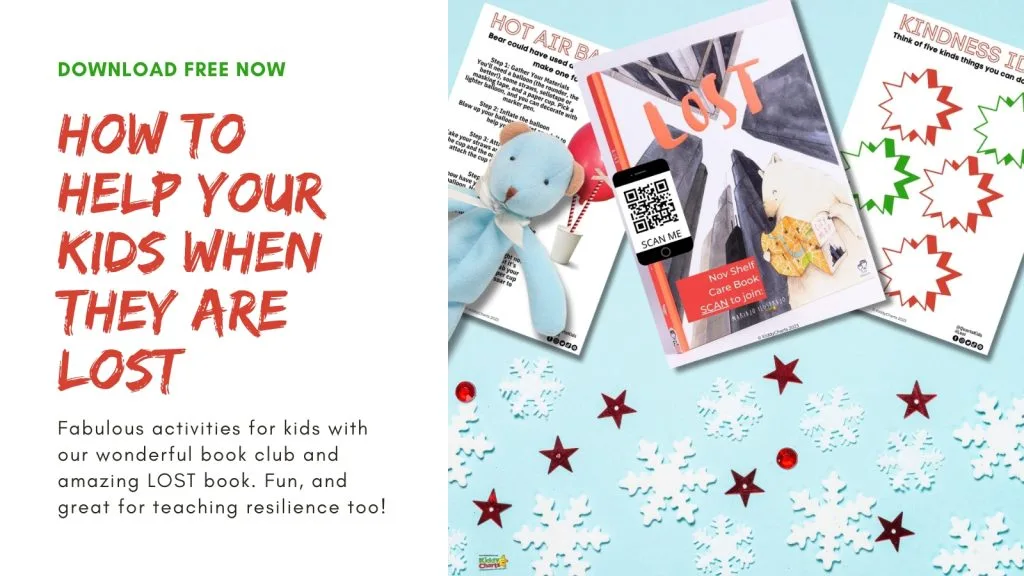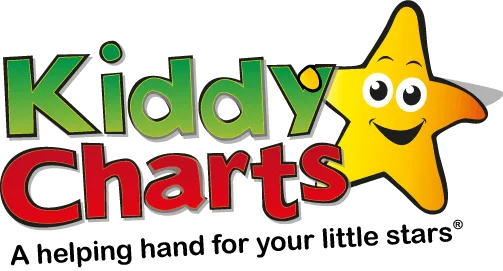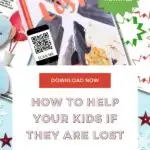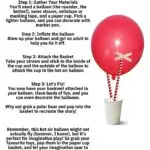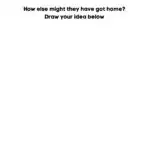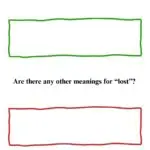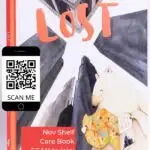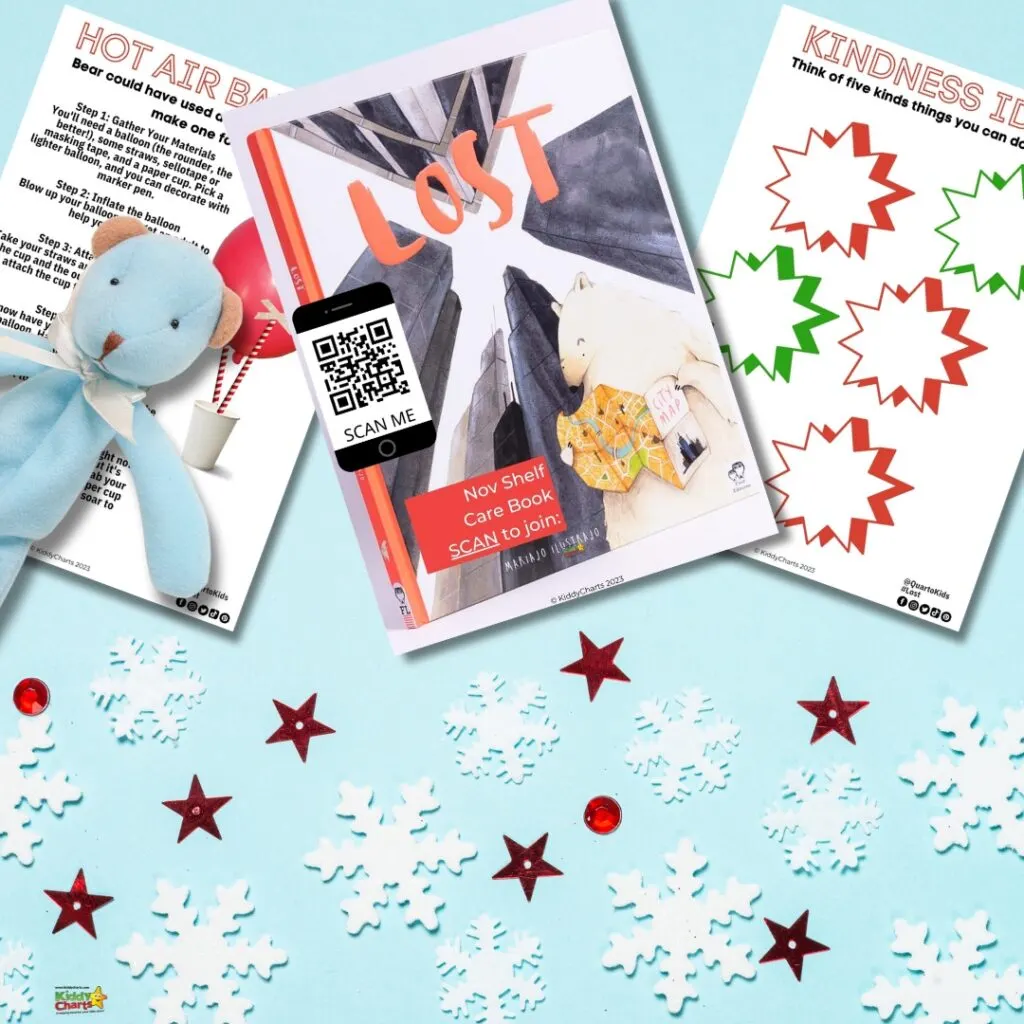We have a new book for you to explore this month, and this time we are looking at a polar bear that gets Lost, with Quarto Kids, and written by Mariajo Ilustrajo. The worksheets explore what it feels like to be lost, being kind when someone needs help, and most importantly what to do if you are lost kids. Don’t forget to get the free Lost eBook, you need to sign up here to our Shelf Care book free kids club:
We are using this book to encourage kids to chat to their parents and carers about what they might do if they get lost. That way, they know what’s best if it happens to them. If your kids are like ours, they WILL manage to get away one day 😂 That’s ADHD energy for you!
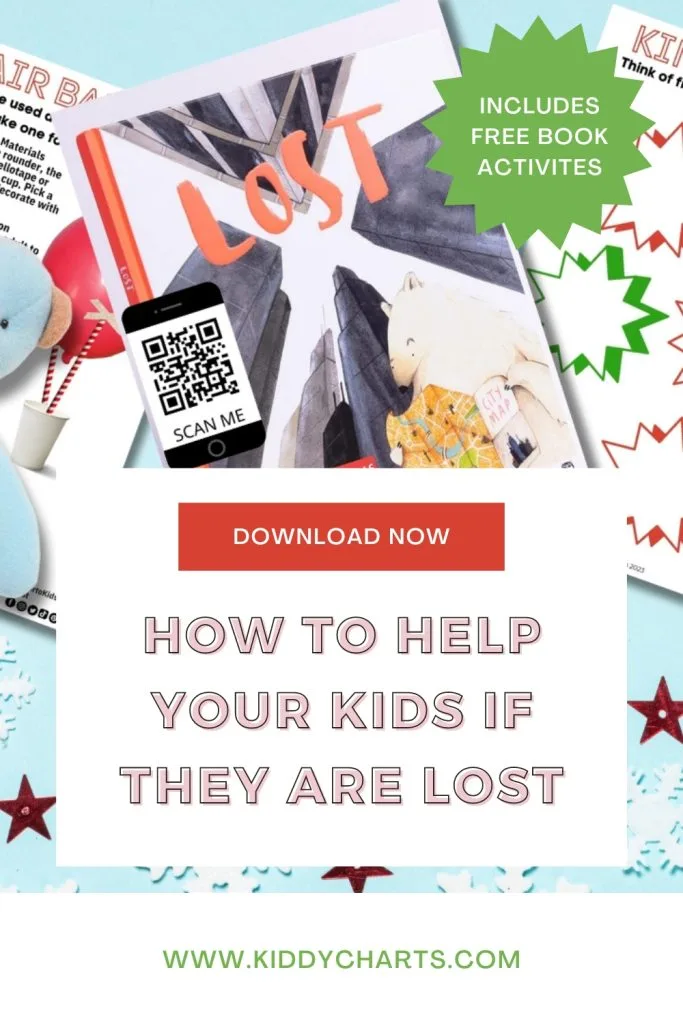
What is Lost about?
This is an enchanting tale that will captivate both children and parents alike. This whimsical book is much more than just a story – it’s an adventure that’s waiting to unfold, a riddle that’s waiting to be solved.
“Lost” is a treasure trove of vivid storytelling, filled with vibrant language and engaging narratives. It’s about exploring the unknown, embracing curiosity, and discovering the joy in getting lost and finding your way again.
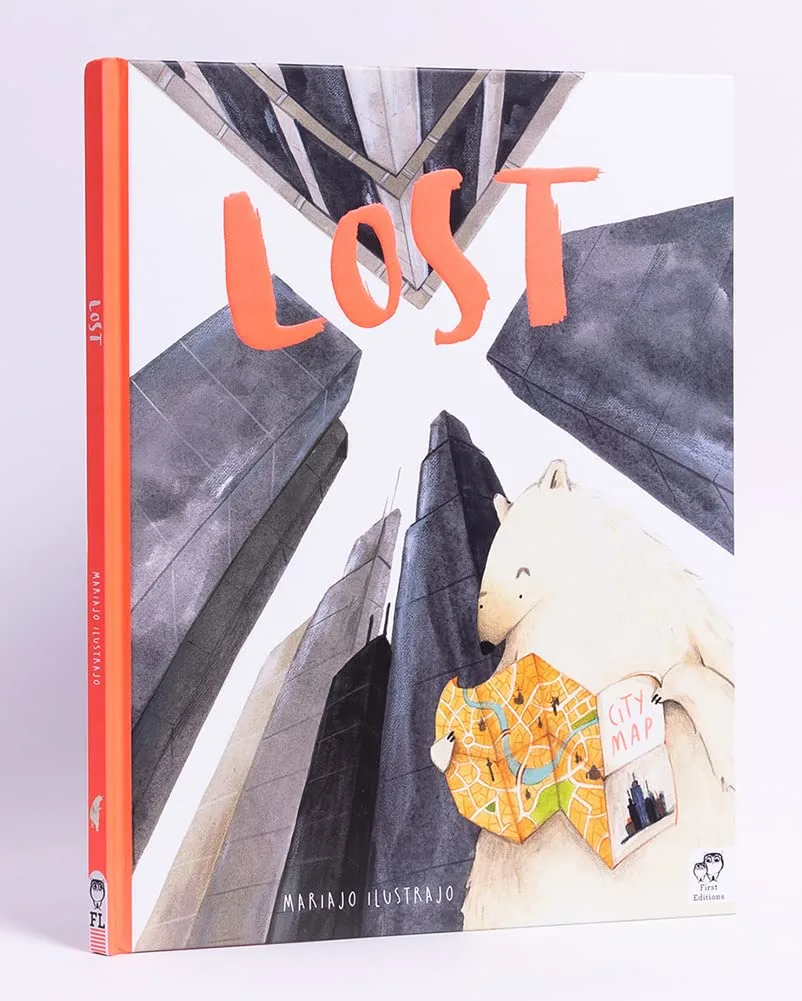
As our young polar bear navigates through the story, they encounter challenges, make friends, and uncover secrets, teaching them – and the readers – valuable lessons about resilience, courage, and the power of imagination. The book provides an opportunity for children to understand the world around them better, fostering empathy, respect for diversity, and environmental consciousness. It encourages kids to see themselves as part of a larger global community, instilling values of kindness, compassion, and responsibility.
With its playful tone, humour, and colorful visuals, “Lost” is a delightful read that sparks creativity and fuels the imagination.
It’s a great tool for parents to engage their children in meaningful conversations about getting lost, self-discovery, personal growth, and our interconnectedness with the world. So, are you ready to get Lost in a world of adventure?
How do we use the worksheets for Lost?
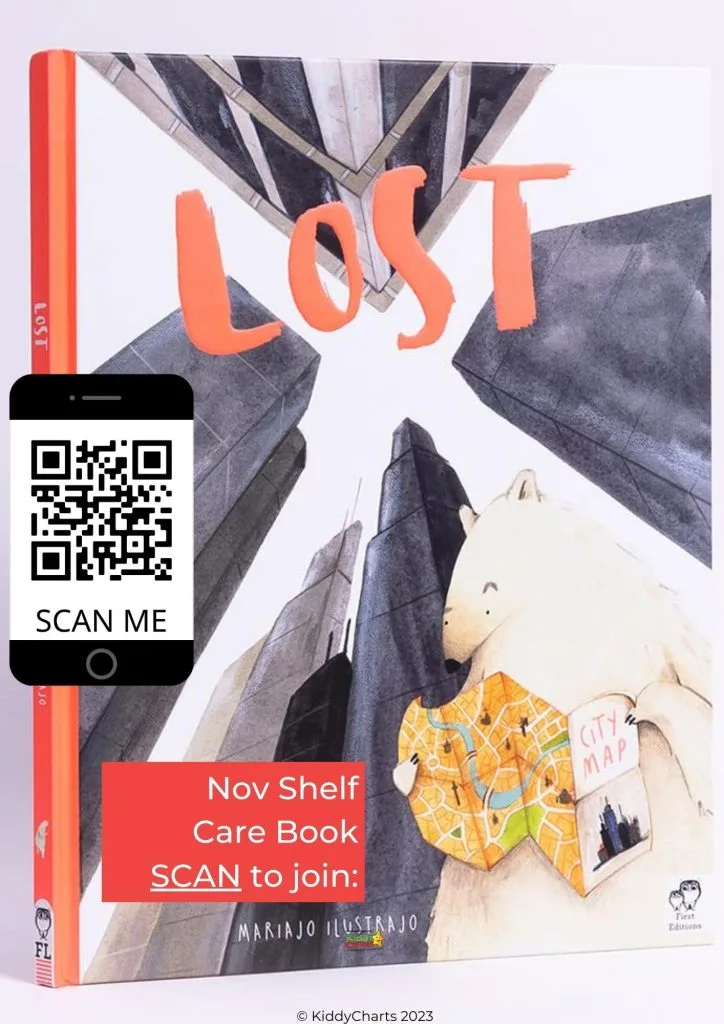
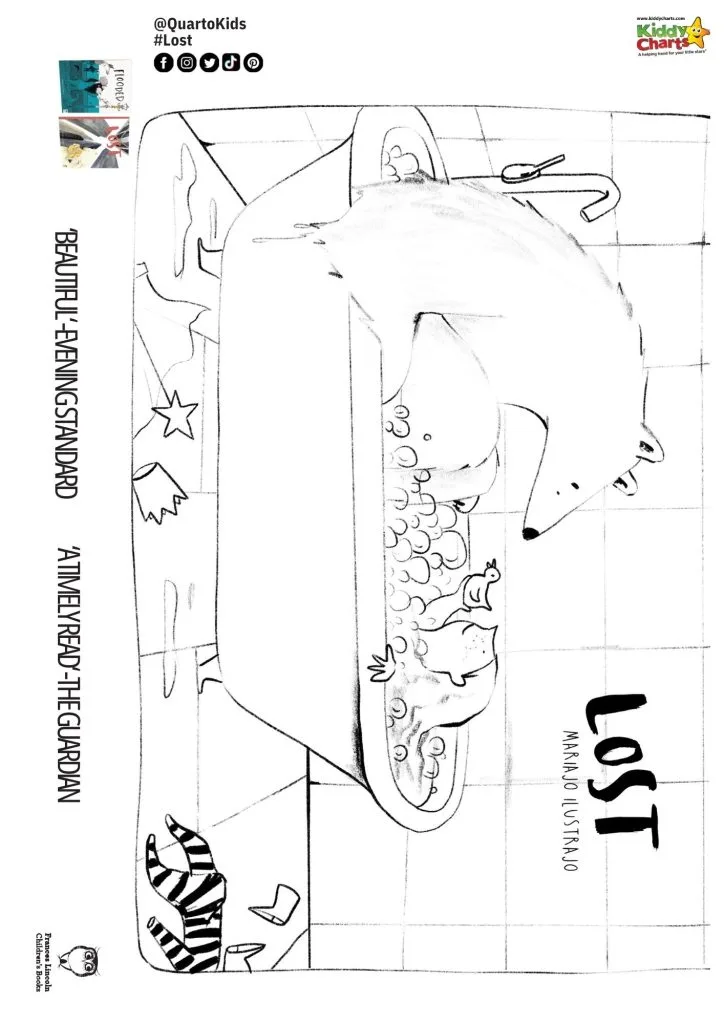
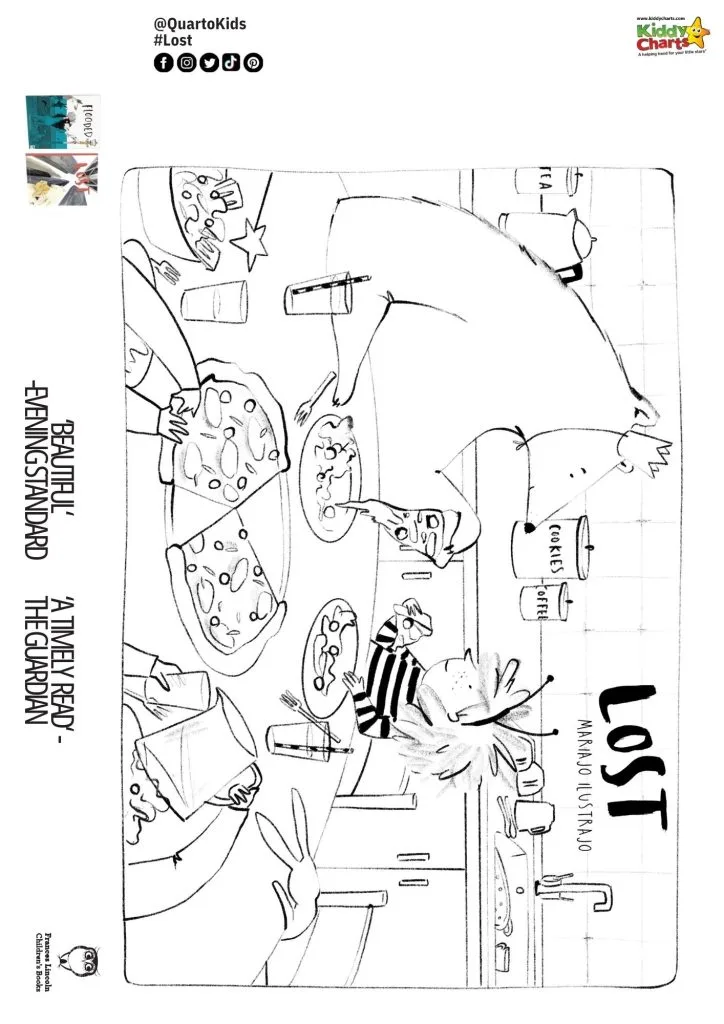
Our first three sheets are the usual – a cover, and then two wonderful colouring pages from the book itself: showing the bear in the “sea” with their friend, as well as them trying all the strange “hot” food, which isn’t a bit like the food in The North Pole.
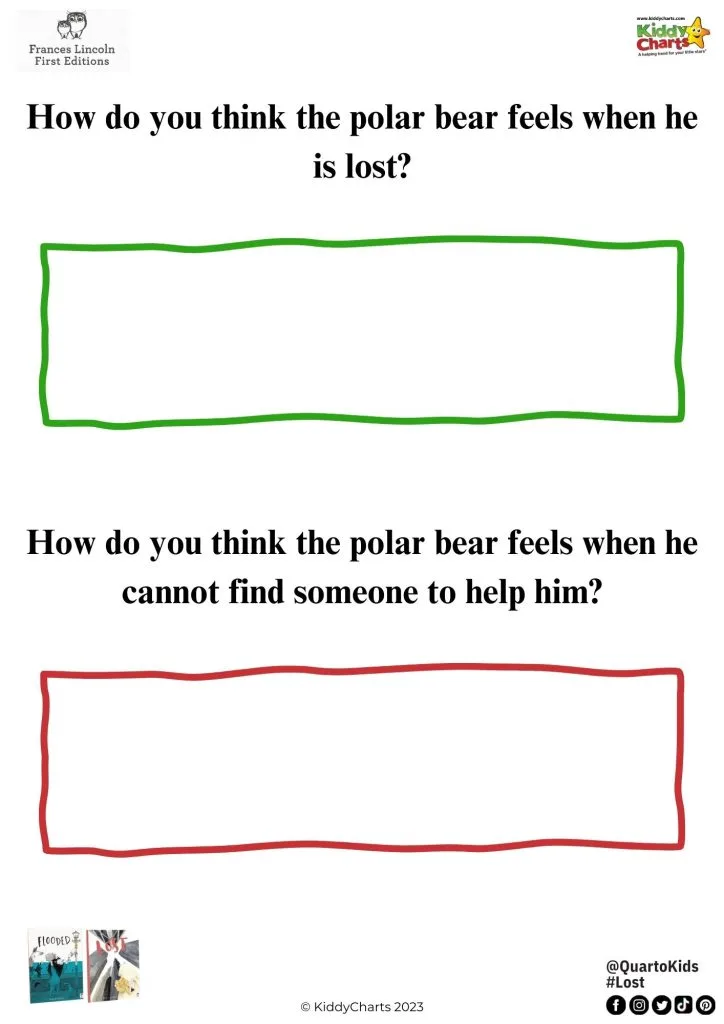
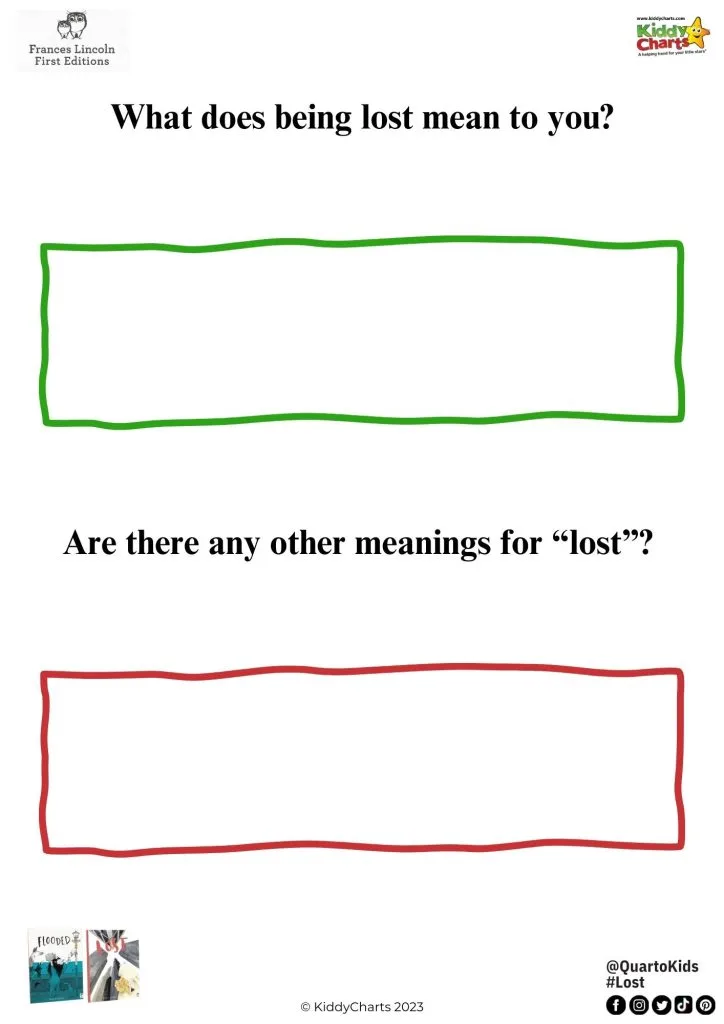
The nest two sheets are all about the feeling of “being lost.” We are asking children to explore what this means for them, and how the polar bear might have felt when they couldn’t find their way home.
This is a great way to teach empathy to kids, but also to help them to think about solving problems as well. And the way that the same word can mean different things, depending on its context.
Let’s chat about other means for lost – so when we feel a little bit “adrift” instead, and what they feels like, and where in our body we feel it. Help your kids to explore this with you.
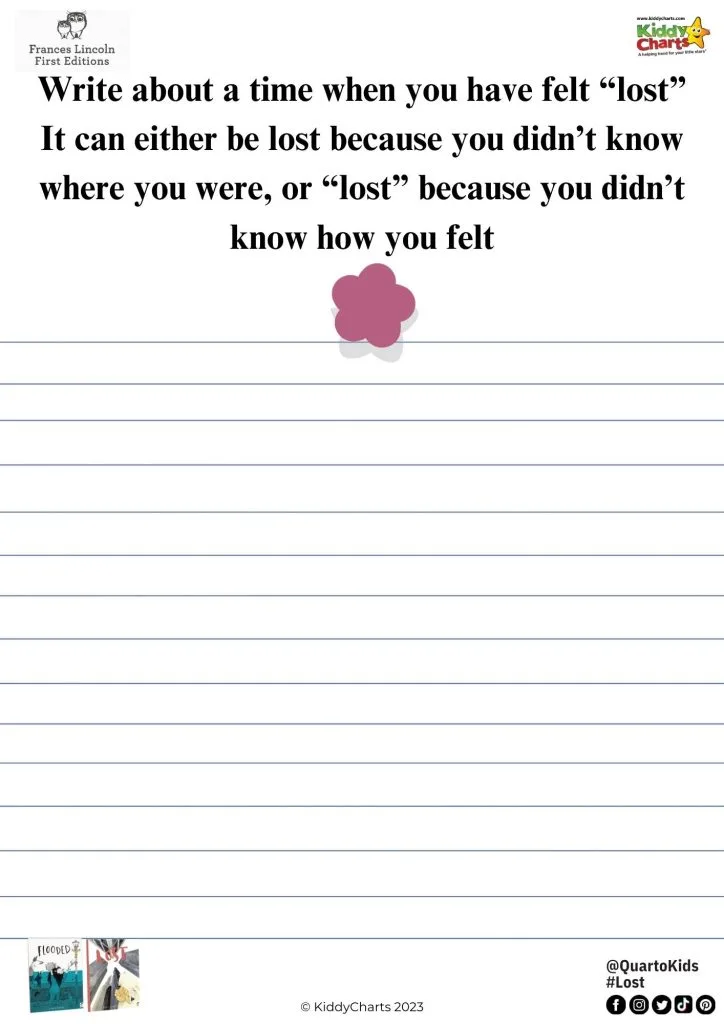
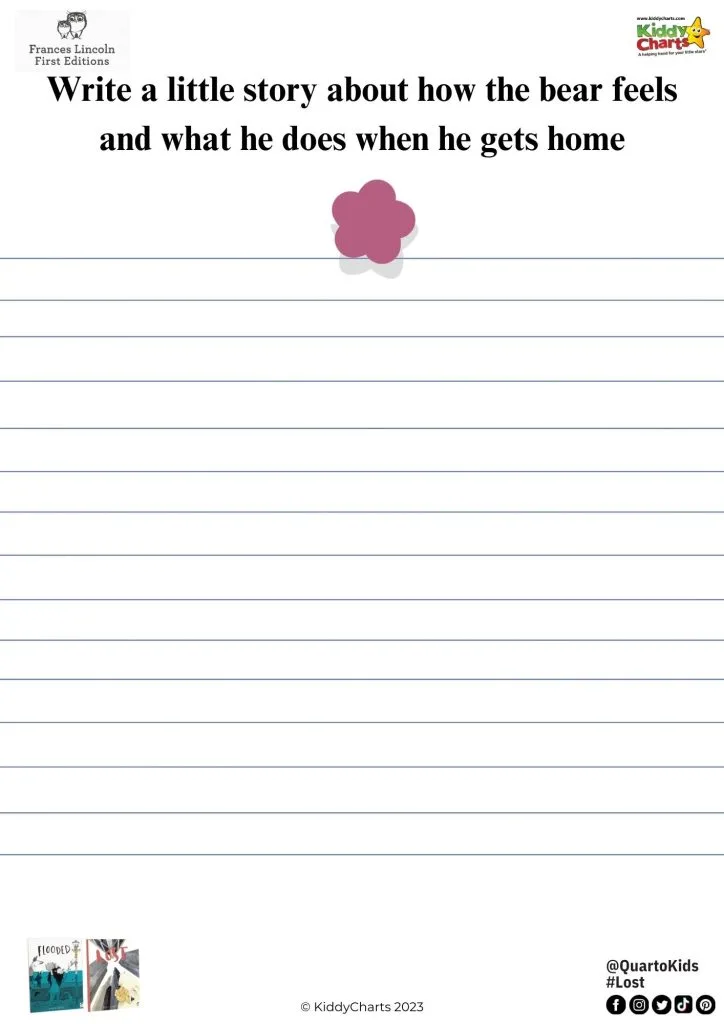
We are encouraging children to write about a time they felt lost, either when they were lost in real life, or they perhaps didn’t know what to do.
In order to focus on both positive and negative feelings within the book, we are also asking children to think about how the bear felt when he came home.
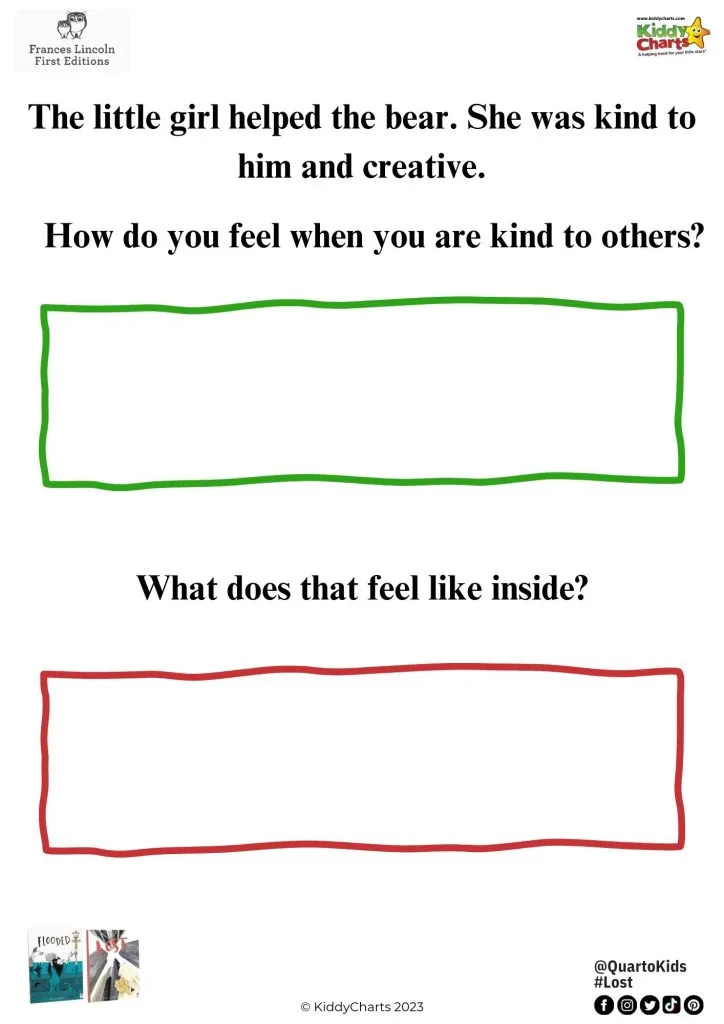
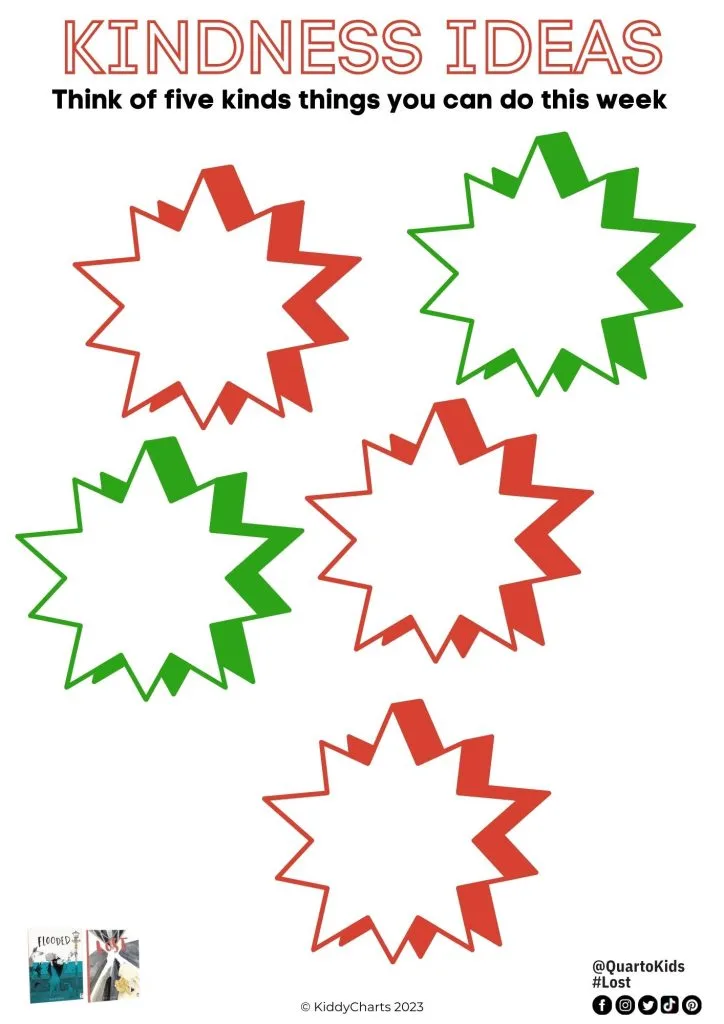
Now, let’s think about how kind the bear’s friend was next within our worksheets, including having five different ideas on how we might be kind to others today. It is good to think about how we feel when we are kind to others as well. Kindness actually promotes positive mental health. It give us a sense of wellbeing, as well as supporting others. What’s not to like about that?
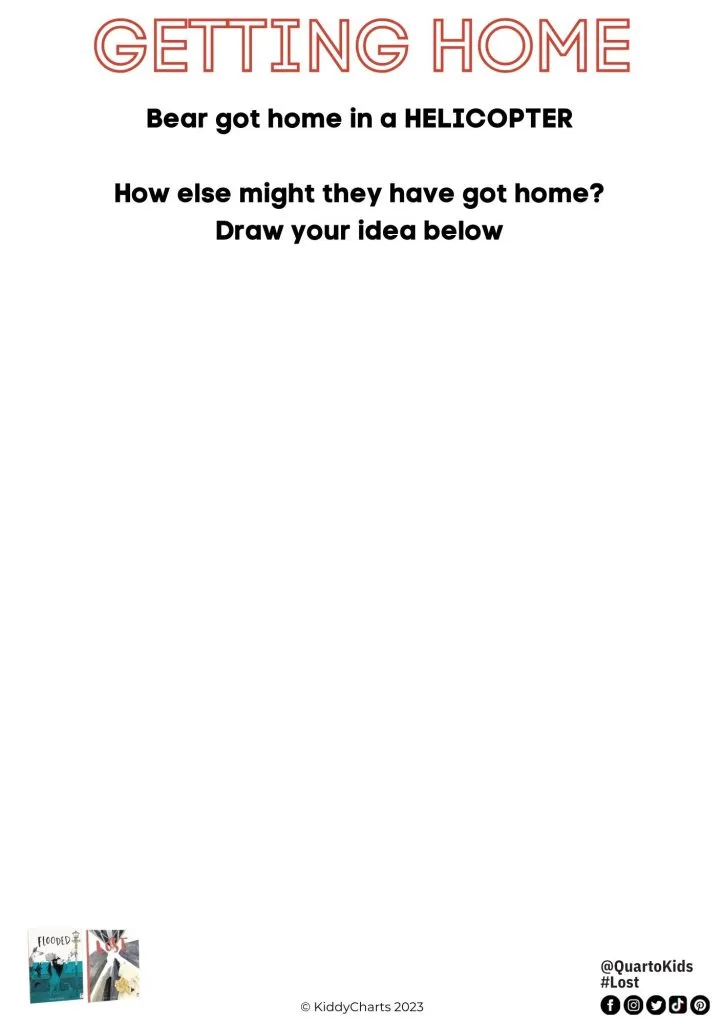
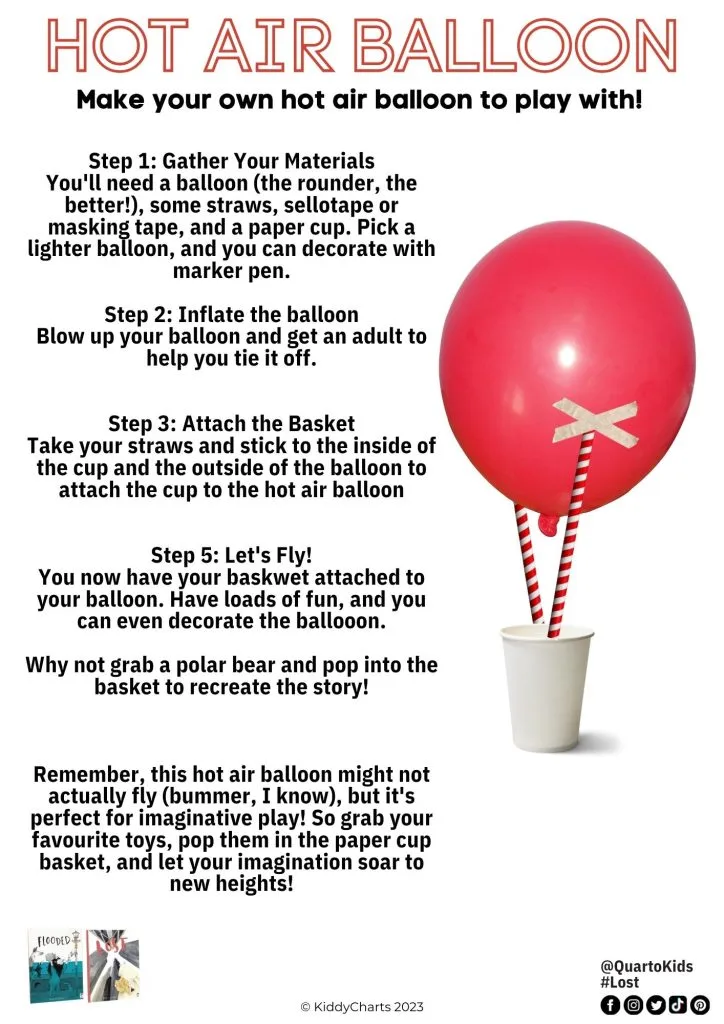
Bear managed to catch a lift on a helicopter thanks to the ingenuity of their friend. How else might they have got home. We are encouraging readers to think of other ways that Bear might have been able to get back to the North Pole. What do you think?
It is important that we understand the messages in here too – that polar bears need lots of space, cold water, much more than just a bath to swim in, and more of their own kind. Sustainability is an important message for us to pass on to our kids, so do check out some of the resources we have on the site for this. Including our That’s Earthmazing colouring book, and our reduce reuse recycle games for kids.
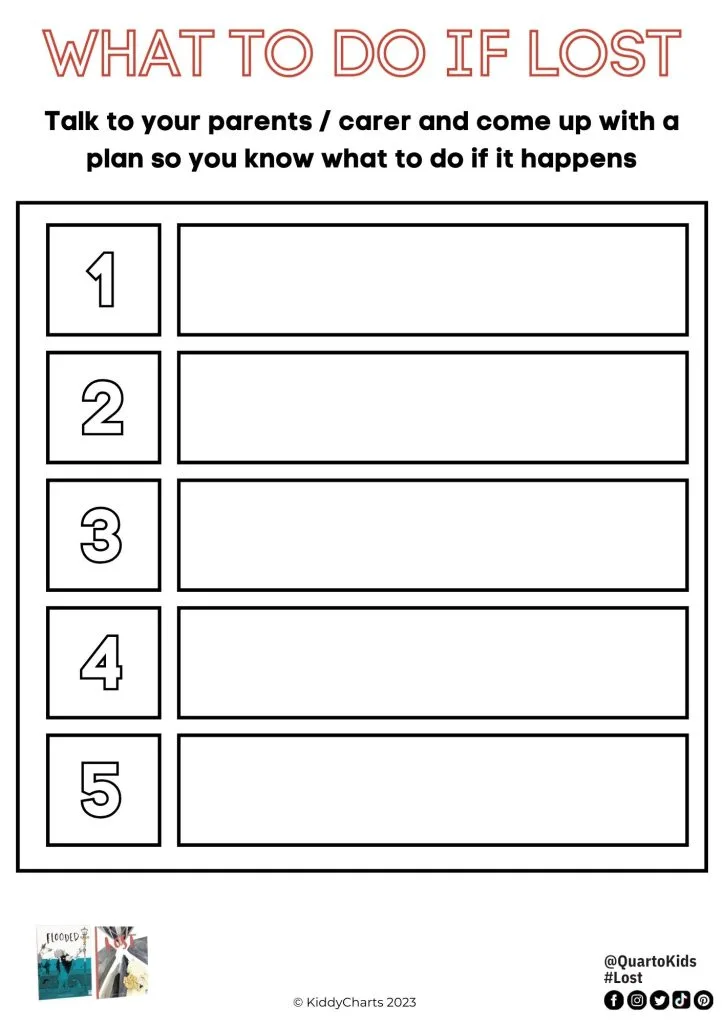
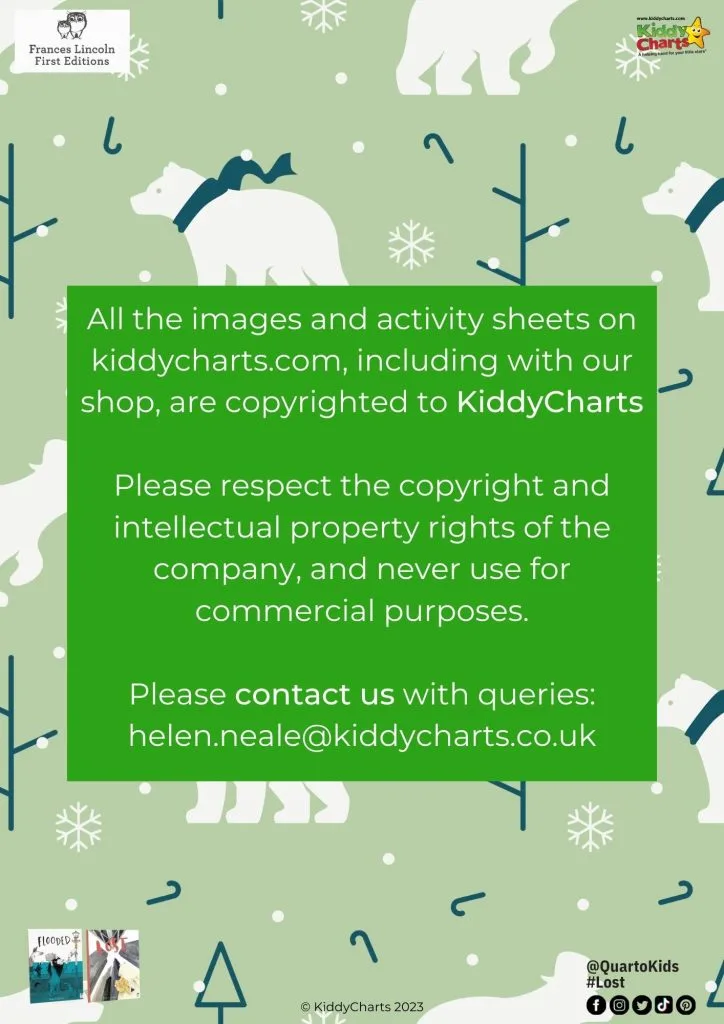
Our last sheet gives the perfect opportunity to talk about what to do if you are lost kids edition! Create 5 things that you and your child have worked out together to do if they cannot find you when they are out and about. You can also create one for when they feel a bit lost too. Here are some ideas to help you along the way for both of these:
Being lost
Stop what you are doing as soon as you realise you are lost, and don’t move
Check to see if you are safe, e.g. not in a road
If you aren’t safe, move to a safe place nearby
Teach your kids your name, and if they are old enough, your phone number so they know it. Put it down on this sheet even! They can also call your name out when they realise they are lost.
Create a safety plan once they realise they are lost, which might include going to a cash desk, finding another mother with children, or speaking to a policeman or someone in uniform.
Feeling Lost
Talk to someone about how you are feeling.
If you don’t feel like talking about it, draw how you are feeling.
Name the feeling that you have; that helps it to be a little bit less scary.
Let them know it is OK to feel this way sometimes, and it will pass. Emotions come and go, and they can be positive or negative and that is normal.
Share with them some helpful ways to connect with others, and make friends. Check out some of the resources on our site around wellbeing and mental health to help.
It is also worth considering a Smartwatch or a cheaper phone, perhaps a second hand one, as kids get older. Xplora is a good smartwatch model to try.
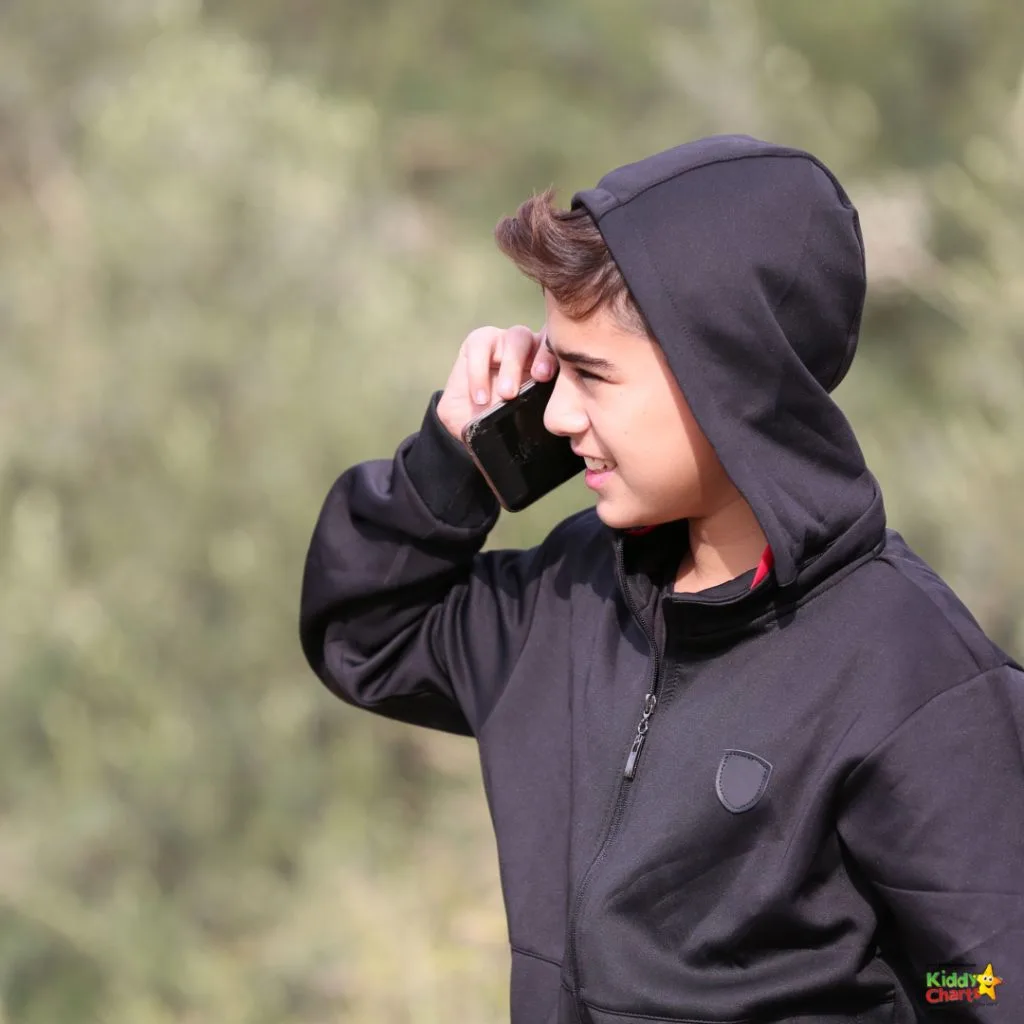
We really hope that you love these worksheets from us. If you do – keep coming back to the site for more, and join our book club too, so you get the book!
To download these worksheets, click on the button or the image below. Thanks, as always, for visiting the site too.
We do hope you will come back again soon.
Helen
